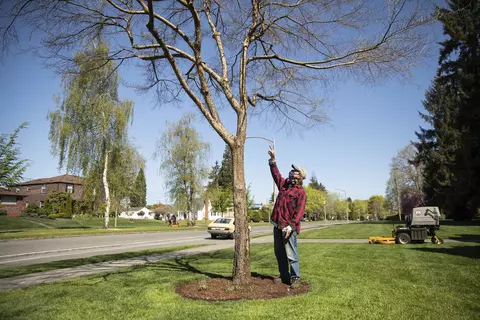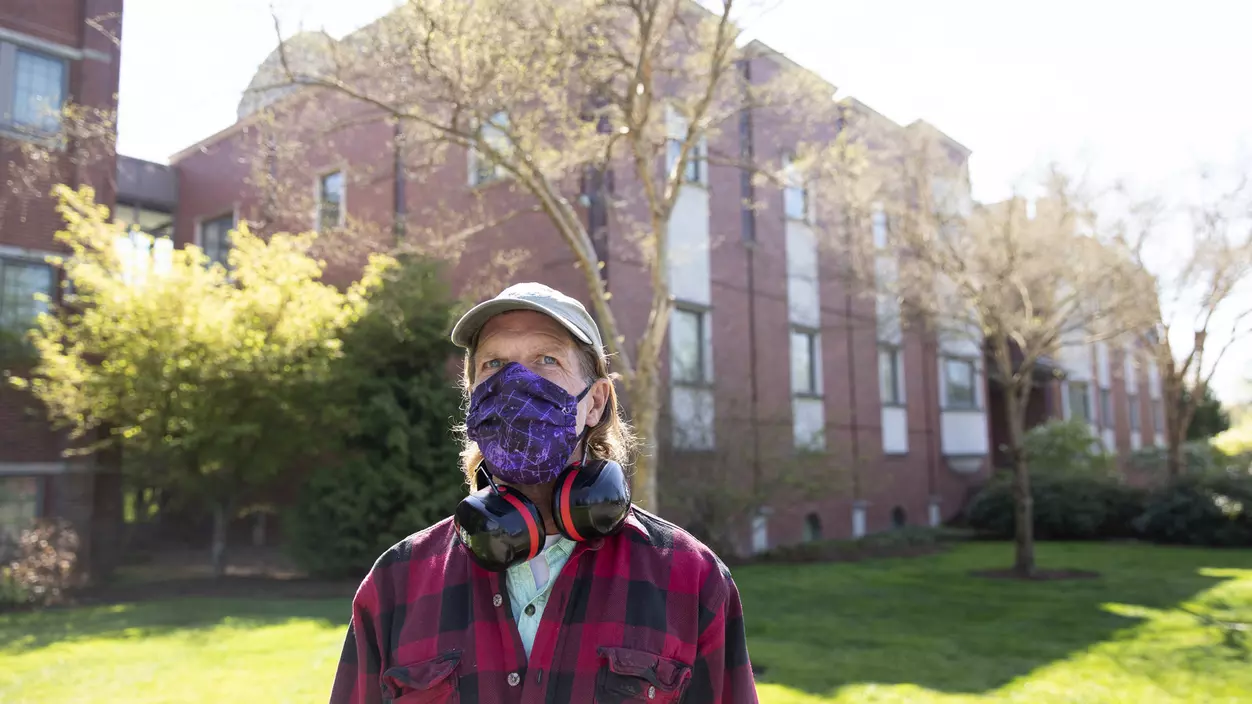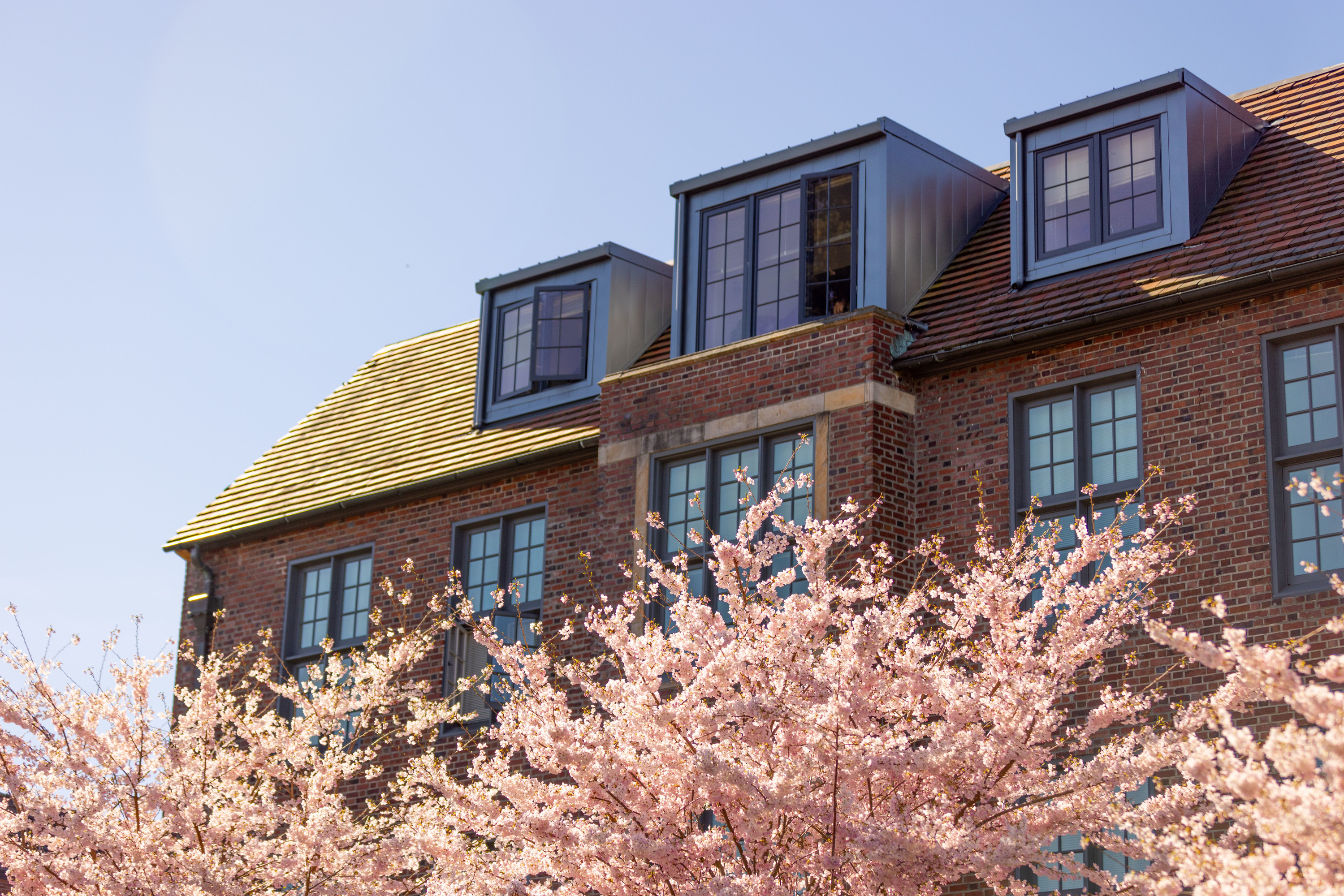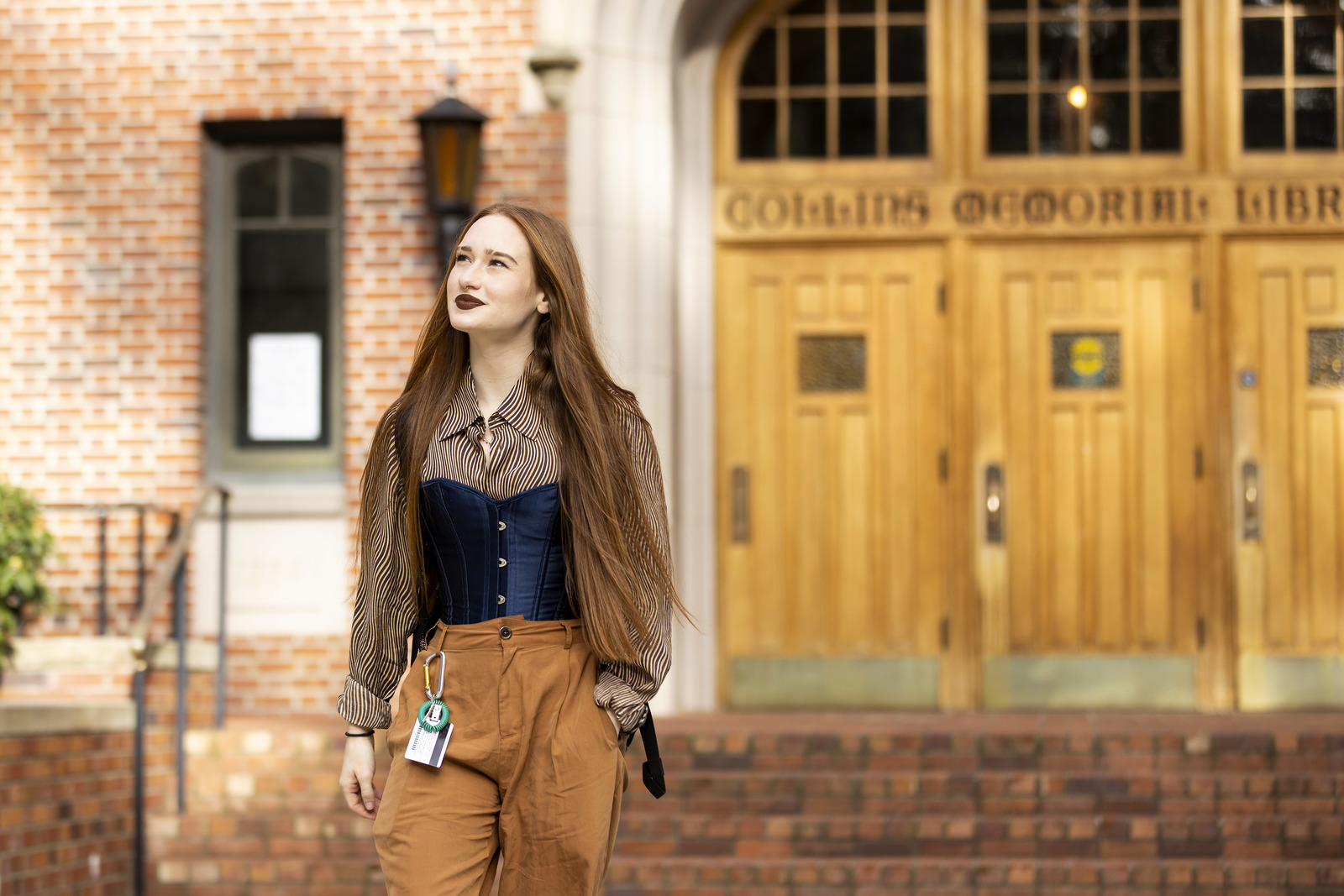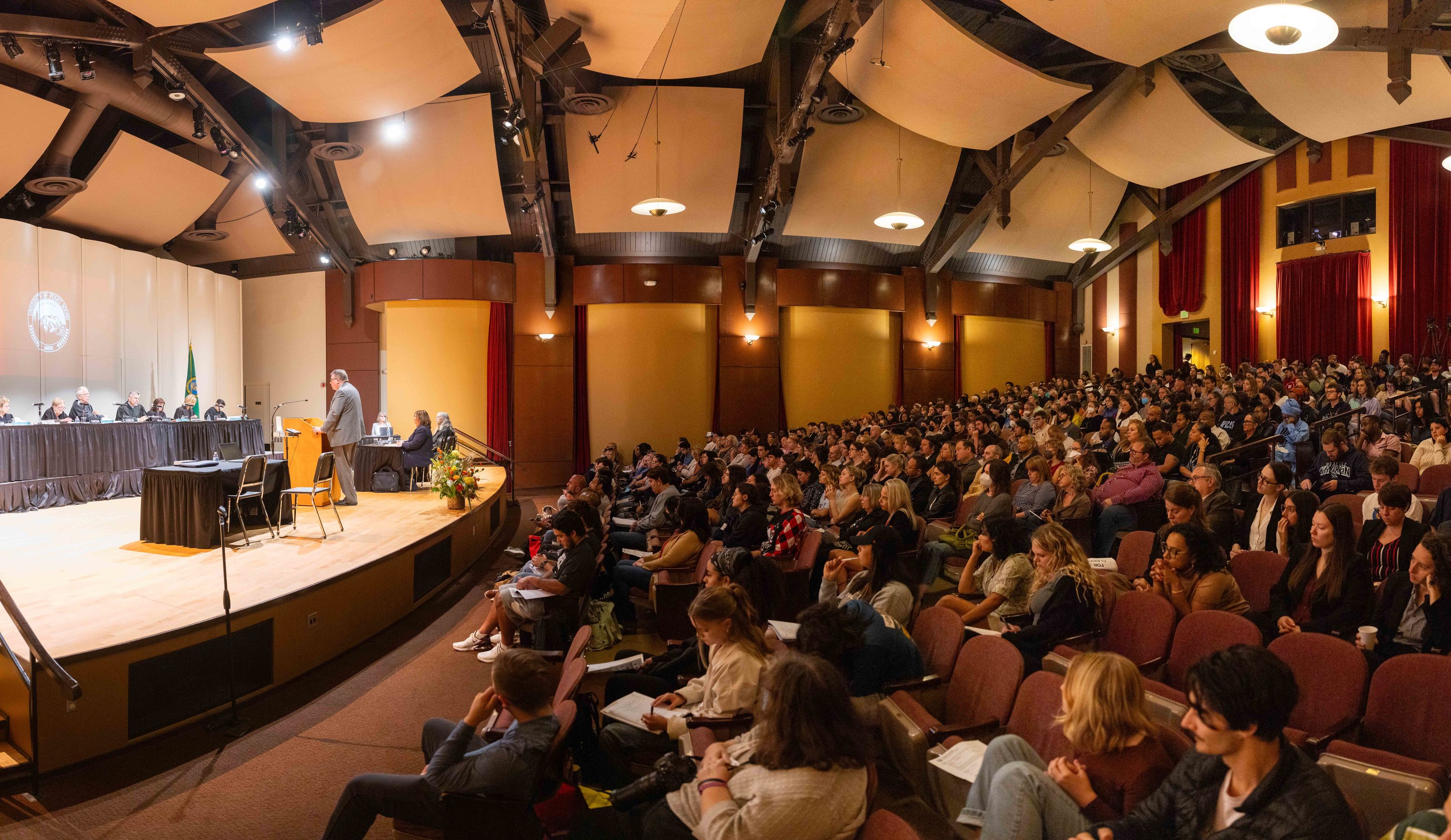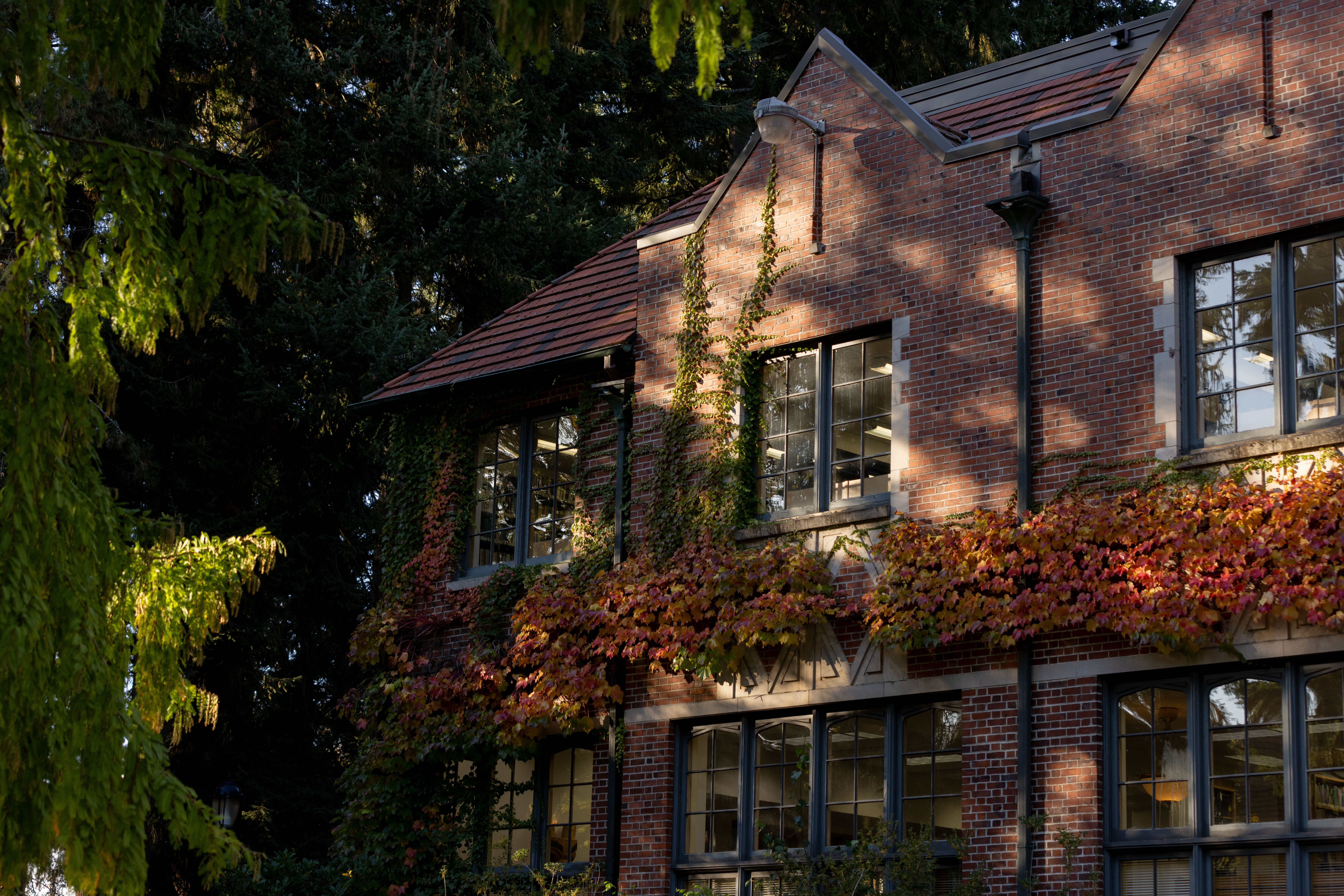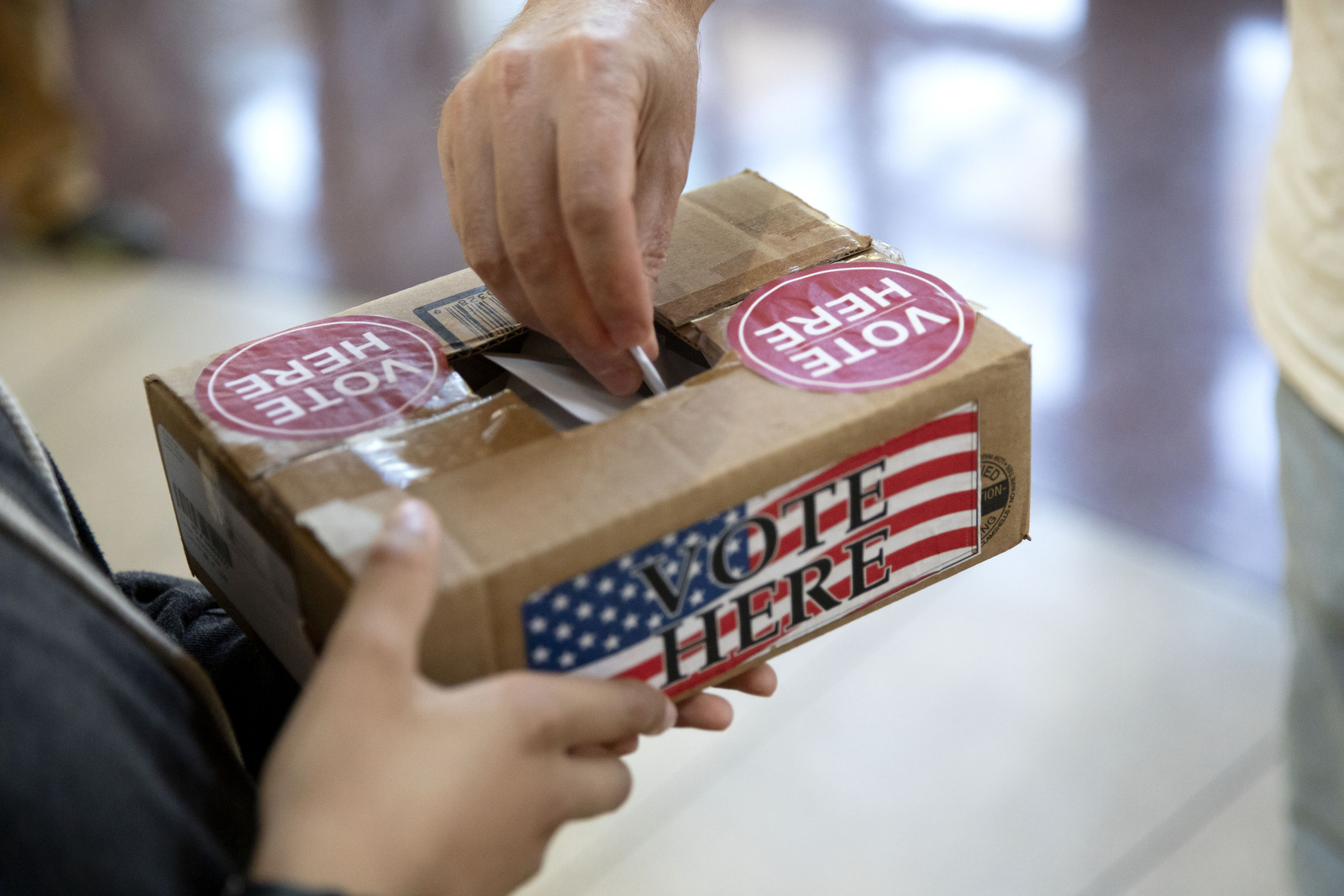On any given day, you can find Andy Lambert tending to the needs of one of Puget Sound’s 1,511 trees.
He’s one of the groundskeepers responsible for keeping our trees healthy and growing—and he takes that job personally.
“My favorite tree is the one I’m working on,” Lambert says. “Each tree is an individual, so there’s a relationship you form with it as you’re pruning.”
Caring for the campus’s trees is no easy task, but it’s one that Lambert has enjoyed for 15 years. Recently, he’s worked on the west side of campus, carefully pruning birch trees near Warner Gym, paper bark maples outside of Wyatt Hall, and elms along Union Avenue. Lambert pays particular attention to the youngest trees on campus; guiding their growth and development while they’re establishing themselves ensures each tree remains strong and healthy as it matures.

